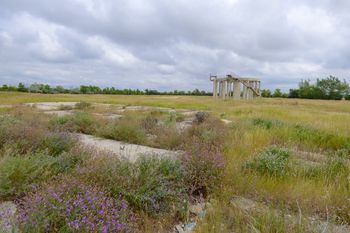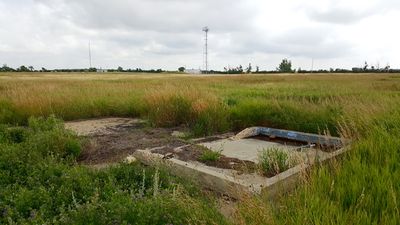Opheim Air Force Station
|
Opheim Air Force Station (1951-1979) - A Cold War Air Force Radar Station first established in 1951 near Opheim, Valley County, Montana. Named Opheim Air Force Station after the location. Initially assigned a Permanent ID of P-26 and later a Sage ID of Z-26 when it became a part of the SAGE System. Abandoned in 1979.
History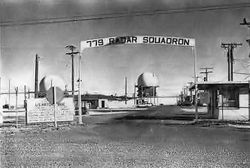 Established in 1951 as Opheim Air Force Station manned by the 779th Aircraft Control and Warning (AC&W) Squadron near the small town of Opheim, Montana. The station initially had both a Ground-Control Intercept (GCI) and an early warning mission. The early warning mission involved tracking and identifying all aircraft entering their airspace while the GCI mission involved guiding Air Force interceptors to any identified enemy aircraft. Controllers at the station vectored fighter aircraft at the correct course and speed to intercept enemy aircraft using voice commands via ground-to-air radio. Initial equipment for the manual GCI system included the FPS-3 long-range search radar and an FPS-4 height-finder radar.
SAGE System TransitionThe transition of the manual GCI system to the automated SAGE system began with the installation of the FST-2 coordinate data transmitter and search radar upgrades. The FST-2 equipment digitized the radar returns and transmitted the digital returns to the SAGE direction center. Under the SAGE System, interceptor aircraft were directed to their targets by the direction center computers and controllers, greatly reducing the need for local controllers and equipment at every radar station. The FST-2 was a very large digital system using vacuum tube technology. Over 6900 vacuum tubes were used in each FST-2 requiring 21 air-conditioned cabinets, 40 tons of air conditioning, 43.5 kva of prime power, and usually a large new addition to the operations building. The FST-2B modification added two more cabinets but with newer solid-state (transistor) technology to process coded responses from aircraft transponders. SAGE System Operation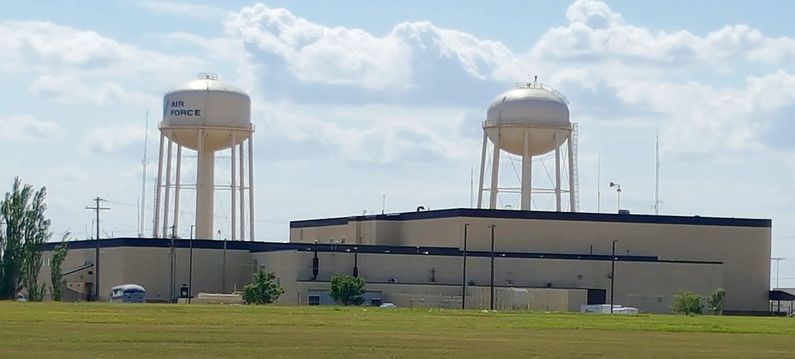
Radar system upgrades for Sage operation usually involved modifications to existing radar sets or new radar sets with the objective of improving high altitude detection and ECM. The original FPS-3 search radar at Opheim was replaced by an FPS-7C which was later upgraded to an FPS-107. The original FPS-4 height-finder radar was replaced by an FPS-6 and an FPS-6B height-finder which were later upgraded to one FPS-26A and one FPS-90. Bids for the construction of the 2,900 square foot SAGE System Annex at Opheim AFS were returned in April 1958 with the low bidder being Lord Caroll, Inc. at $87,467. The Annex was completed and the FST-2 was installed by Burroughs tech reps between June and September of 1960. The site began operation as a SAGE site on 15 Jun 1961, initially feeding data to the FSQ-7 computer at the Minot SAGE Direction Center DC-19 at Minot AFB. With the deactivation of DC-19 in 1963, control was assumed by Malmstrom SAGE Direction Center DC-20 at Malmstrom AFB. In September 1972 the massive vacuum tube FST-2 Coordinate Data Transmitter was replaced with the much smaller and more reliable solid-state FYQ-47 Common Digitizer. Gap FillersOpheim AFS was responsible for the operation and maintenance of two remote unattended gap-filler radar sites. The unattended gap filler sites were placed in locations where the main search radar lacked coverage. These sites were equipped with short range FPS-14 or FPS-18 search radars and FST-1 Coordinate Data transmitters that sent digitized radar target data to a SAGE direction center and to the main radar site. Both the radar set and the FST-1 were dual channel to increase site up time. Maintenance teams were dispatched for regularly scheduled maintenance or when fault indicators on the FSW-1 remote monitoring equipment suggested the site had problems. The FSW-1 also allowed remote operation of specific functions such as channel changes for the radar and for the FST-1, it also allowed remote operation of the diesel generators at the gap filler site. The two gap-filler sites under Opheim's responsibility were at Whitewater, MT, and Whitetail, MT.
ClosureThe public announcement of the closure of Opheim AFS came in April 1978 as a part of the closure of some 40 radar sites around the nation. At the time of the announcement, Opheim had 90 assigned military personnel and 25 civilian employees. Opheim AFS was closed on 1 Jun 1979 and the 779th Radar Squadron was deactivated on 29 Sep 1979. Physical Plant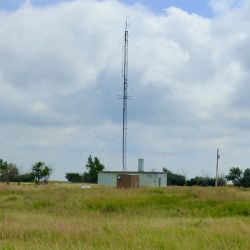 The physical plant of the site was divided into the main site, a radio site, and a housing area. The main site housed the operations building, the radar towers, the enlisted barracks, the bachelor officer's quarters, the orderly room, the dining hall, the motor pool, and the backup generators. A separate Ground to Air Transmitter/Receiver (GATR) radio site housed the radio equipment for directing aircraft intercepts under the SAGE System. Like most early radar stations, Miles City originally had a radio transmitter site and a separate radio receiver site used by local controllers for voice direction of fighter interceptors to their targets. With the SAGE System, the SAGE Direction centers had the primary task of directing intercepts and the local radio sites were reconfigured, usually into a single site that was known as the Ground to Air Transmitter Receiver (GATR) site. The GATR site communicated with the interceptors from either the local site or the SAGE direction center via voice commands and/or a digital data link.. Funds for the construction of the Opheim GATR site were released in June 1959 and the low bidder submitted a bid of $162,688 in August 1969. Construction of the concrete block building was to be completed in 1960. Apart from the main site was a small 27-unit housing area for married personnel and near the site entrance was a 16-lot trailer housing area for married personnel. Some married personnel were housed in the local community and at Glasgow Air Force Base, about 40 miles away.
Current StatusAbandoned, reportedly now belongs to Valley County. Not much remains in the way of buildings. The only remaining original building on the main site seems to be the Radio Transmitter Building. The most prominent feature is the supporting structure for the FPS-3 Radar Tower. The remainder of the buildings have been leveled and only the foundations remain. The housing area has also been leveled. The GATR site was not visited.
See Also:
Sources:
Fortification ID:
Visited: 10 Aug 2016
| |||||||||||||||||||||||||||||||||||||||||||||||||||||||||||||||||||||||||||||||||||||||||||||||||||||||||||
